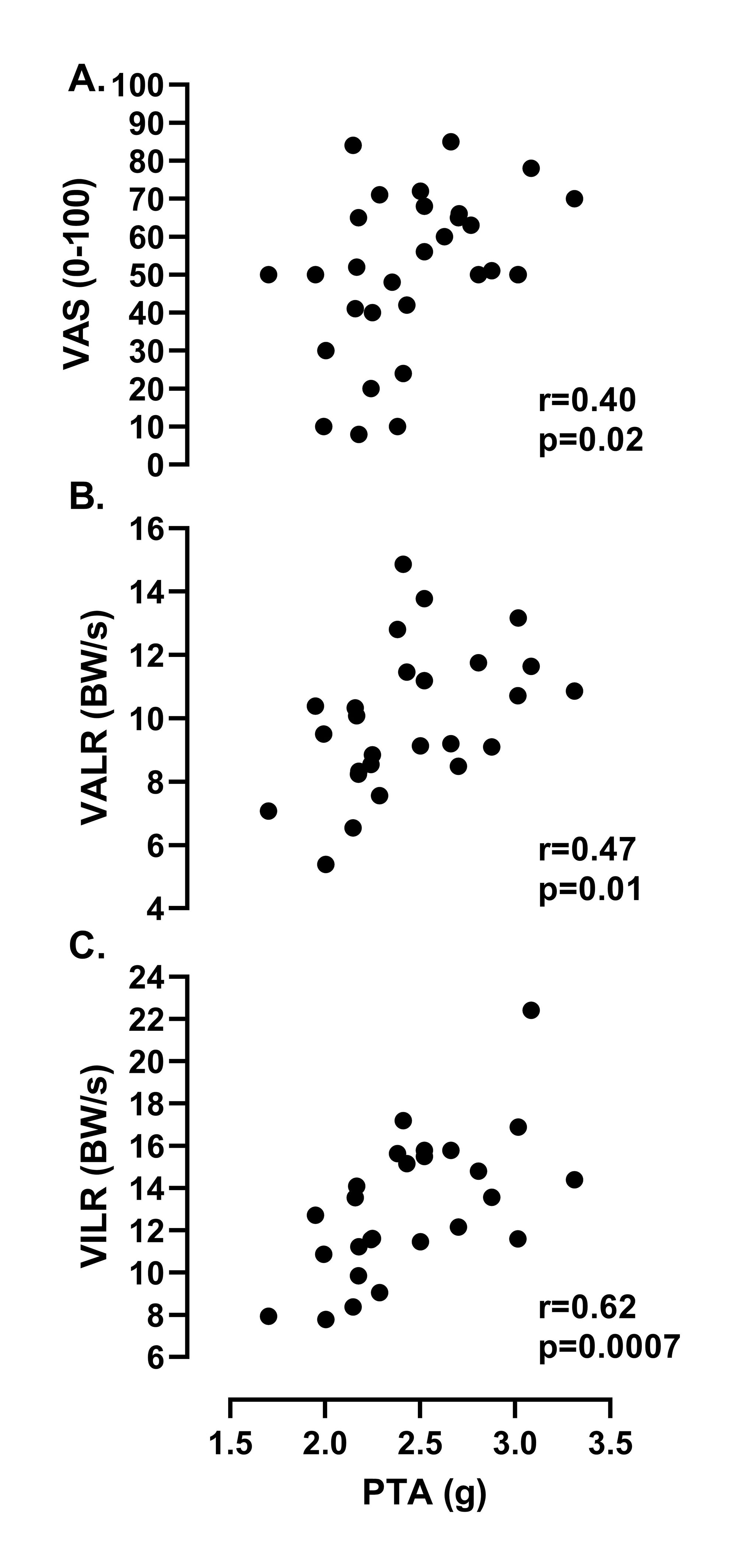Session Information
Session Type: Poster Session B
Session Time: 9:00AM-10:30AM
Background/Purpose: Pain and abnormal loading are known to be associated with the progression of knee osteoarthritis (OA). Individuals with knee OA have increased vertical loading rates (i.e., how quickly load is applied during each step). Ankle-worn inertial measurement units (IMUs) can be used to measure peak tibial acceleration (PTA), a metric strongly correlated to vertical loading rates during running. However, this relation has not been examined in the context of knee OA. The purpose of this study was to determine the relation of PTA to 1) vertical average and instantaneous loading rates and 2) knee pain severity in adults with knee OA.
Methods: Participants who met the National Institute for Health and Care Excellence clinical definition of knee OA were recruited. Prior to a gait assessment, participants reported knee pain severity which was assessed with the question, “How bad has the pain been in your knee, on average, in the past week?” and scored with the Visual Analog Scale (VAS; 0=no pain and 100=pain as bad as it could be). The index (more symptomatic) knee was analyzed in the current study. Participants then completed a gait assessment on an instrumented treadmill with IMUs (IMeasureU Ltd., Auckland, New Zealand) firmly secured immediately proximal to each medial malleolus. Participants walked at their self-selected speed for 3 minutes while ground reaction forces (1200 Hz) and PTA (1000 Hz) data were collected during the last minute. Vertical average and instantaneous loading rates (VALR; VILR) were averaged across 10 gait cycles and normalized to body mass in bodyweight per second (BW/s); PTA (g) was averaged over 1 minute. Spearman’s and Pearson’s correlations assessed the relation of PTA to pain and vertical loading rates, respectively.
Results: A total of 34 participants (67.6% female) had a mean age of 62.8 ± 8.1 years and BMI of 30.1 ± 7.1 kg/m2. Median VAS of the index knee was 50.0 (Interquartile Range [IQR] 25.0). Mean PTA of the index leg was 2.5 ± 0.4 g. There was a moderate association between PTA and VAS (r=0.40, p=0.02). Complete loading metrics were available in 26 participants. Mean VALR and VILR of the index leg were 10.0 ± 2.3 BW/s and 13.0 ± 3.3 BW/s, respectively. There was a moderate association between PTA and VALR (r=0.47, p=0.01). In comparison to associations with VALR, there was a stronger association between PTA and VILR (r=0.62, p=0.0007).
Conclusion: PTA is associated with knee pain and vertical loading rates within the more symptomatic knee. PTA can easily be measured using an inexpensive, clinically accessible wearable device. Future work should determine whether it is feasible to reduce pain and loading by decreasing PTA.
To cite this abstract in AMA style:
James K, Corrigan P, Lanois C, Huang C, Davis I, Stefanik J. Association of Tibial Acceleration During Walking to Knee Pain and Loading in Adults with Knee Osteoarthritis [abstract]. Arthritis Rheumatol. 2022; 74 (suppl 9). https://acrabstracts.org/abstract/association-of-tibial-acceleration-during-walking-to-knee-pain-and-loading-in-adults-with-knee-osteoarthritis/. Accessed .« Back to ACR Convergence 2022
ACR Meeting Abstracts - https://acrabstracts.org/abstract/association-of-tibial-acceleration-during-walking-to-knee-pain-and-loading-in-adults-with-knee-osteoarthritis/

